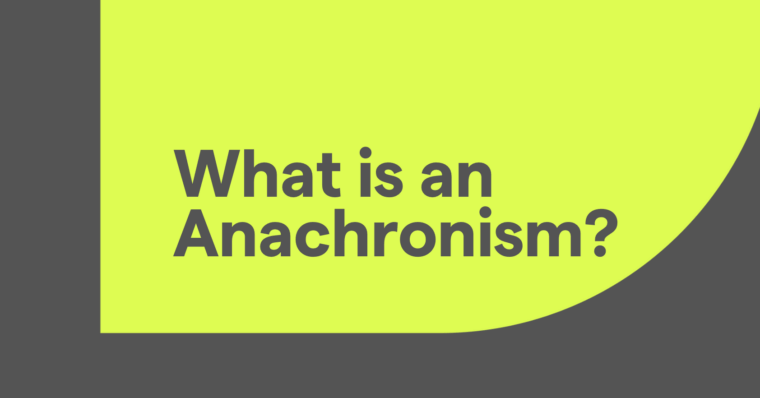
Academic writing relies on sources. Sources are the books, websites, articles, movies, speeches, and everything else you use to conduct your research and support your position. Without valid sources, you don’t have a valid piece of academic work.
Sources fall into two main categories: primary sources and secondary sources. Both provide valuable information for you to use in an essay or another kind of academic writing, but they provide very different kinds of value. Read on to learn about the differences between primary and secondary sources and how your writing relies on both.
What is a primary source?
A primary source is a firsthand account of an event that happened, data from a study, or an original work. Here are some examples of primary sources:
- Photographs of historical events
- News articles
- Novels and short stories
- Autobiographies by historical or famous people
- Letters and journals
- Published essays and opinion pieces
- Original works of art
- Documentaries
- Excerpts from radio broadcasts and podcasts
- Data from studies and surveys
- Poll results
- Recordings of speeches, music, and other performances
- Government documents about specific policies and laws
- Laws (as in, the actual text of an ordinance or law)
When you work with a primary source, you’re doing your own analysis of the work in question. For example, you might read Frankenstein and then write an analytical essay about its themes. If somebody else then reads your writing and cites it in an essay of their own, they’ve used your work as a secondary source (we’ll share more on that later).
When you’re writing a lab report, the data you gathered through your experiment is a primary source. Similarly, if you’re doing a write-up of an event you attended, your experiences at the event and any photos or videos you took are primary sources. Primary sources don’t necessarily have to be documents you create yourself, however. They can also be letters written by historical figures, raw data taken from experiments others performed, photos others have taken, and memoirs about specific events.
What is a secondary source?
Secondary sources are a step removed from primary sources. Essentially, they’re sources about primary sources. Secondary sources include:
- Essays analyzing novels, works of art, and other original creations
- Textbook passages discussing specific concepts, events, and experiments
- Biographies of historical and famous people
- Books about specific events, concepts, movements, and works
- Critical works by academics and professional critics (e.g., a film critic’s review of a movie)
- Political commentary
See the difference between primary and secondary sources? While a primary source provides direct access to a work for you to discuss, analyze, and cite it, a secondary source gives you a look at that work through another writer’s lens. For example, the text of a president’s speech is a primary source, while a political commentator’s column discussing that speech is a secondary source.
Working with secondary sources can help you understand how the work being discussed has been presented and perceived. It can also provide insight to how the work fits into, and in some cases shaped, its era’s zeitgeist.
How about tertiary sources?
Sources go beyond primary and secondary. You can also use tertiary sources to help with your academic research. A tertiary source is a text that helps you find primary and secondary sources, like an index, directory, or bibliography.
A tertiary source usually doesn’t provide citable content itself, but gives you a list of sources that can. Wikipedia is probably the most popular tertiary source among students—though you can’t cite Wikipedia in your academic writing, you can consider it an excellent resource for finding sources that you can cite. The reason why you can’t cite Wikipedia is because anybody on the internet can (and does) edit it, so it’s not considered a credible source. You can’t verify the information published on its pages because there’s no way to ensure that the people editing them are qualified authorities on the subjects they’re writing about or are providing objective, factual information.
However, many Wikipedia editors cite credible sources when they make their edits as well as in Wikipedia page references, and these are usually perfectly acceptable sources for you to cite.
When to use primary vs. secondary sources
Primary and secondary sources fulfill different needs. We touched on these different purposes earlier, but here’s the rest of the explanation:
When you’re making a clear assertion of fact or presenting a theory or argument you’ve developed, you need to support your position with primary sources. Citing primary sources enables you to back up the statements you make with clear, credible, verifiable data. Basically, if your paper is an original contribution to the existing body of knowledge on the subject you’re covering, the most important sources you work with should be primary sources.
You’ll most likely have assignments where you use both primary and secondary sources. If you’re working on a piece discussing the topic in a broader sense, secondary sources can complement primary sources to help you back up your position.
For example, in an essay discussing the factors known to decrease motor vehicle accidents, you’d likely refer to data collected by law enforcement agencies and agencies like the National Highway Traffic Safety Administration (primary source). You might also rely on sources like articles published about car accident stats (primary source) and books about advances in vehicle safety (secondary source).
Another example could be a paper debunking commonly accepted biographical facts about a historical figure, where you cite excerpts from that figure’s journals (primary source) and contrast that with a text biographers have written about the figure (secondary source).
How can I tell the difference between primary and secondary sources?
It’s not always easy to tell whether a piece is a primary or secondary source. Sometimes it’s obvious: The actual text of a law you’re citing is clearly a primary source. But what about an interpretive statement of that law? It comes from the agency tasked with enforcing the law and clearly explains the law in plain English, so it’s a primary source to cite in your essay about the effects that law will have, right?
Nope. An interpretive statement is actually a secondary source—unless your writing is focused on the interpretive statement, like an essay analyzing how the law is being presented to voters through the agency’s choice of wording for the interpretive statement.
The easiest way to tell if a source is a primary or secondary source is to ask, “What is this about?” Consider a literary analysis of The Things They Carried. This analytical essay is about a book, making it a secondary source. The Things They Carried, a book about American soldiers’ experiences in the Vietnam War, can also be a relevant secondary source for a paper on the war because it’s a semi-autobiographical collection of short stories by an author who had served in Vietnam.
Common questions about primary and secondary sources
Can a work of fiction be a source for academic writing?
Yes. When you’re analyzing a fictional work, that fictional work is a primary source and any derivative works are secondary sources. Generally, fictional works aren’t acceptable sources for scientific or historical papers, but may be used as a secondary source if your writing is discussing how a specific event or concept is depicted in fiction.
Can I cite a source I’ve written or created?
Yes. In a scientific paper about research you conducted, you refer to the data you collected and the methods you used. In a humanities paper, you might discuss previous research you conducted. In a literary comparison essay, you might discuss a story you wrote. In each of those cases, your written work would be a primary source.
Do primary and secondary sources need to be cited differently?
No. Whether a source is considered primary or secondary for the topic you’ve covered doesn’t impact how you need to format its citation. The type of work it is and the style guide you’re using determine how you need to format your citations. The three most common style guides for academics are MLA, APA, and Chicago, and each has its own particular rules and requirements for citing just about any kind of source, including photos, websites, and YouTube videos.
>>Read More: Make your Essay Structure Rock-Solid with These Tips
Give your writing extra polish
Once you’ve gathered a body of appropriate, helpful sources, it’s time to get to writing. Don’t worry about perfect grammar or a coherent flow at this point—just write. Once you’ve got a first draft down, Grammarly helps you strengthen your academic writing by catching any grammar mistakes and sentences with a too-casual tone for an academic audience.






